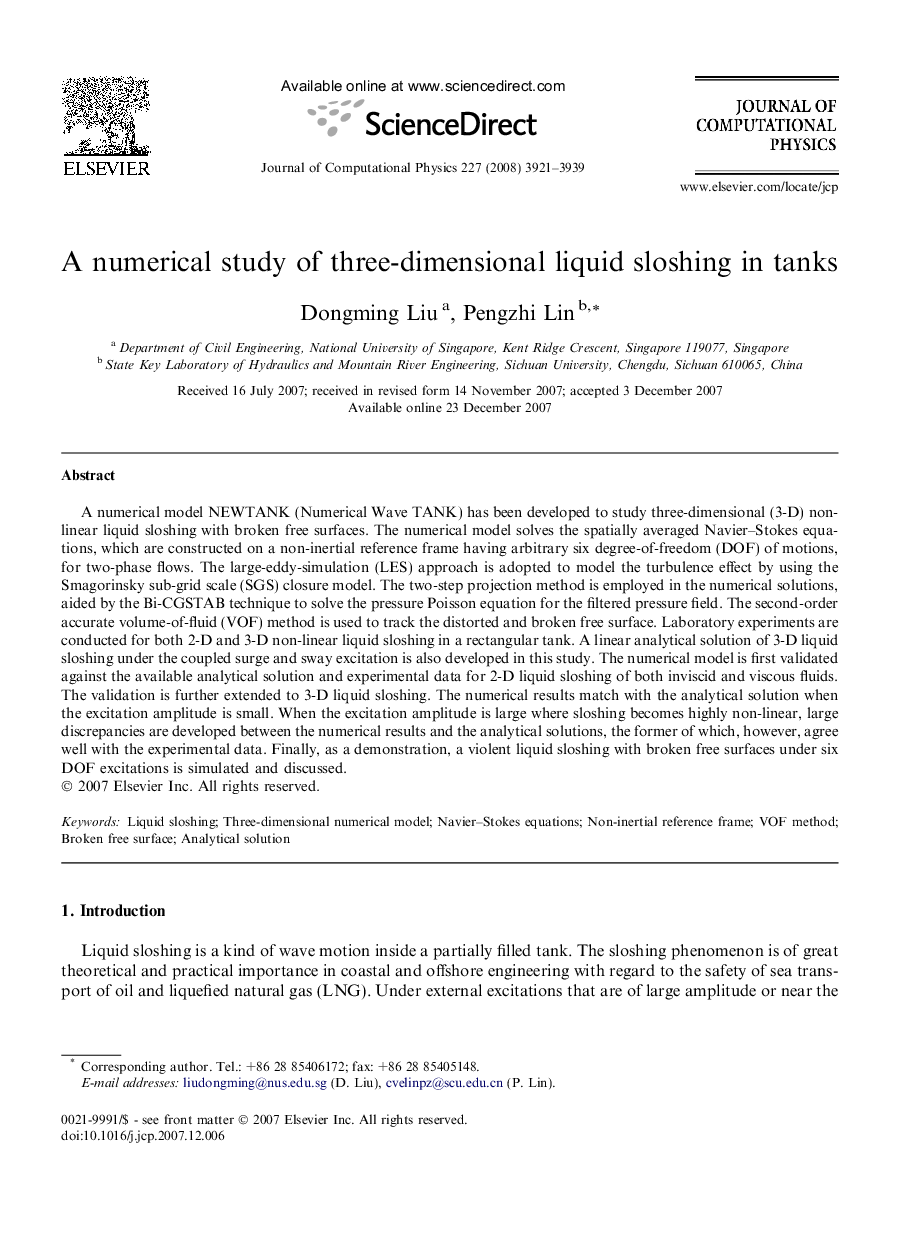| Article ID | Journal | Published Year | Pages | File Type |
|---|---|---|---|---|
| 521209 | Journal of Computational Physics | 2008 | 19 Pages |
A numerical model NEWTANK (Numerical Wave TANK) has been developed to study three-dimensional (3-D) non-linear liquid sloshing with broken free surfaces. The numerical model solves the spatially averaged Navier–Stokes equations, which are constructed on a non-inertial reference frame having arbitrary six degree-of-freedom (DOF) of motions, for two-phase flows. The large-eddy-simulation (LES) approach is adopted to model the turbulence effect by using the Smagorinsky sub-grid scale (SGS) closure model. The two-step projection method is employed in the numerical solutions, aided by the Bi-CGSTAB technique to solve the pressure Poisson equation for the filtered pressure field. The second-order accurate volume-of-fluid (VOF) method is used to track the distorted and broken free surface. Laboratory experiments are conducted for both 2-D and 3-D non-linear liquid sloshing in a rectangular tank. A linear analytical solution of 3-D liquid sloshing under the coupled surge and sway excitation is also developed in this study. The numerical model is first validated against the available analytical solution and experimental data for 2-D liquid sloshing of both inviscid and viscous fluids. The validation is further extended to 3-D liquid sloshing. The numerical results match with the analytical solution when the excitation amplitude is small. When the excitation amplitude is large where sloshing becomes highly non-linear, large discrepancies are developed between the numerical results and the analytical solutions, the former of which, however, agree well with the experimental data. Finally, as a demonstration, a violent liquid sloshing with broken free surfaces under six DOF excitations is simulated and discussed.
